Purchasing a drone can be a stressful task for the most part. There are so many specifications, features and various gimmicks to choose from up to the point that many people forget the stuff that is actually far more important. That’s why, today, we will be focusing on one of those lesser-known drone characteristics that tend to go under the radar. As the title implies, I am referring to gimbals, specifically : 2 axis vs 3 axis gimbals. But first, we will explain what is a gimbal on a drone ?
When shopping for an aerial photography drone, among specs such as flight time and operating range, you will eventually stumble upon a part in which you have to decide which gimbal to go for.
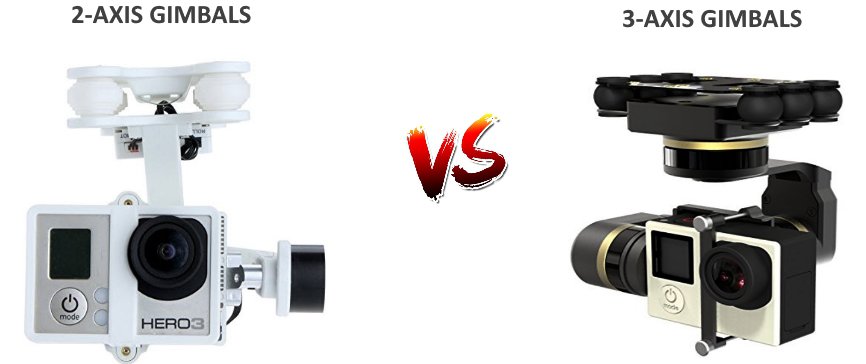
2 axis gimbal vs 3 axis gimbal
At the moment, the biggest dilemma people tend to have is between 2 axis and 3 axis gimbal. Why is that so? Well, with each having their own respective pros and cons, for an average Joe it can get really tricky to make the correct decision when it comes to a 2 axis vs 3 axis gimbal. So, the first thing we are going to do is show the best drones carrying gimbals after which we will explain the 2 types of gimbals in question!
5. Yuneec Typhoon H
With the recent announcement of an official Yunec Typhoon H upgrade named Typhoon H Pro, a lot of attention has reflected back to the original model. And with everything it has to offer, Typhoon H definitely belongs to the top of the food chain.
While its brother H520 is catered more towards other industries, Typhoon H is made especially for professional photographers in desperate need of a proper aerial platform. So, if you are one of them, then don’t hesitate to take a closer look at this marvelous model!
Interesting features and well-deserved camera upgrade
I suppose we should start off with the fact that Yuneec Typhoon H is a fully fledged hexacopter with interesting supporting features thanks to its 6 motors. Primarily, I am referring to the fact that it has 5-motor failsafe meaning your drone can land safely even if one of the motors stops working in the middle of your flight.
They even go up another level by adding 4-motor failsafe as well, but its reliability highly depends on which particular motors stop working. Furthermore, Yuneec Typhoon H comes equipped with a wide array of flying modes enabling it to be a viable aerial photography platform for both beginners and more experienced commercial users.
This is partially so due to the camera upgrade it has received. The original Yuneec Typhoon H was bundled with a CGO 4K camera while the “new” one sports CGO3+ which adds several key benefits. The most important thing is that it takes exceptional aerial footage (and photos) in 4K at 30fps. Yuneec Typhoon H Pro, on the other hand, will have a 1-inch sensor that will further improve its viability as a top-flight professional aerial platform.
Specifications
Even though DJI devices have set up some sort of a standard as far as the range (and battery duration in some cases) is concerned, it is not fair to judge other models by their example solely because they are using their own patented transmission technology.
With that said, Yuneec Typhoon H is still pretty good, rocking 1.5 kilometers of operating (and video transmission) range. Battery duration is not bad either with approximately 23 to 25 minutes of airtime. A pretty sweet package, don’t you agree!?
4. DJI Mavic Pro
Unfortunately for DJI Mavic Pro, with all the latest arrivals it has fallen to the 4th spot on the majority of drone charts nowadays. It’s all simply because of the release of DJI Mavic Air which seems to be making quite the mark for itself already. However, with DJI Mavic Pro still having higher specifications and being an already-proven-to-work model, can it still be competitive enough to stay in the top 5? Well, let’s see…
Brilliant performance in a small package…
DJI Mavic Pro, even with DJI Mavic Air being released, is still considered the go-to drone for people needing top-flight performance in a small form factor. Due to its foldable design and overall miniature dimensions, DJI Mavic Pro does an amazing job of being with you right when you need it the most… and I’m sure you’ll agree with me when I state that the same cannot be said for fully fledged drones.
Best of all, there are no quality compromises due to its small size – DJI Mavic Pro basically has everything that DJI Phantom 4 series of drone comes with as far as features are concerned. Heck, it even sports obstacle avoidance which adds another level of reliability to the package. The camera is no joke either – with a 3 axis gimbal and 4K at 30fps capability, DJI Mavic Pro is still definitely a force to be reckoned with!
Specifications
Just like I already stated above, DJI models (including this one) have been setting up new heights as far as operating range with high-end models is concerned. When it comes Mavic Pro, that’s made true by DJI’s patented OcuSync technology which allows up to 7 kilometers of operating and video transmission distance.
Airtime is another important factor for such a high-end drone and it’s safe to say DJI Mavic Pro does not fail to deliver. That’s because its intelligent flight battery can endure up to 27 minutes of airtime per single charge. Make that closer to half an hour if you are aiming for DJI Mavic Pro Platinum.
3. DJI Mavic Air
DJI Mavic Air, the newest in the lineup of DJI drones, has finally hit the shelves. Now that all the hype is surpassed and we are witnessing the first tests and fully fledged reviews… now is the time to make a final statement on it. By that, I refer to answering one simple question – can DJI Mavic Air pose a threat to Mavic Pro or will it just be a Spark successor?
It’s a tough one, no doubt about that… especially since it’s difficult to properly quantify and quality the fact that the size aspect (for something capable of doing lots of professional work) of this little bugger is ridiculous. But, I guess it’s still worth a try!
Is this the Mavic Pro killer we’ve all been waiting for?
It’s safe to say that DJI Mavic Air combines the best of Spark and Mavic Pro. It actually falls right in the middle between these 2 awesome drones… but soon you’ll realize that it’s much closer to the Mavic Pro than you initially thought. First of all, the features are plentiful and you’ll have a lot to write home about.
For instance, ActiveTrack and TapFly are still here, and as you all know these are the most popular features of high-end DJI drones that came out in the last couple of years. There are some new additions as well – QuickShots, SmartCapture and FlightAutonomy 2.0 which is basically an advanced (and upgraded) obstacle avoidance system.
When it comes to the camera, that’s where things get particularly interesting. You see, this little bugger sports a 4K-ready camera that can record at 30fps with no stuttering at all. The same can pretty much be said about Mavic Pro too… However, if you tune the resolution down a notch, you’ll experience higher FPS as well as higher bitrates meaning that, at least on paper, DJI Mavic Air camera is slightly better than that on DJI Mavic Pro.
They both come with 3 axis gimbal solutions allowing them to roll, pitch and jaw their way to unparalleled aerial footage. Shakiness is a thing of the past and so is that nasty jello effect. In fact, this miniature drone delivers basically the same video quality as the majority of fully sized drones out there.
Specifications are outright sick!!!
Yes… Yes, they are! DJI Mavic Air sports a hefty 3S LiPo battery with 2375mAh capacity. It’s able to provide the drone with slightly more than 20 minutes of flight time per single charge. Moreover, the operating range is absolutely brilliant thanks to the new (and slightly redesigned) transmitter that has kept the same charm as that of DJI Mavic Pro.
To be more precise, Mavic Air can reach up to 5 kilometers away from its transmitter in clear and unobstructed areas. Make that 4 if you’re living in an urban area with lots of interference.
2. Autel Robotics X-Star Premium
If you are looking for a drone that is going to stand out with its immensely different looks but won’t lack in performance, then look no further than Autel Robotics X-Star Premium. Yes, the Premium model that comes with slight boosts and several alterations over the original ones which, in the end, makes it pose as a striking device. In a world ruled by DJI and their flock of professional, fully autonomous and long-range drones, is there enough room for a steady competitor like Autel Robotics? Let’s find out, shall we!?
Camera and features
I would like to start off with the design. Why? Well, purely because X-Star Premium sports a bright orange design that makes it stand out from all other drones on the market. Usually, most professional-grade drones are monochromatic but the folk over at Autel Robotics had other plans with this one. And it serves them right – X-Star Premium perhaps can’t combat DJI drones in terms of specifications, but it does so incredibly well as far as design is concerned.
Features and camera are good too. In fact, the camera is mounted on a 3 axis gimbal immediately exclaiming the fact that it’s a premium drone. The camera itself can record in 4K at 30fps and provides excellent colors and great photo/video stability. Features are here as well. There are several autonomous flight modes as well as magnetic interference protection and GPS/GLONASS connectivity for added reliability.
Performance doesn’t fall behind either
Looks – check! Features – check! Camera – check! The only thing that remains to be explained about Autel Robotics X-Star Premium are its features. I already gave you some info above when I stated that this little bugger cannot combat DJI drones in terms of specs. However, that doesn’t mean X-Star Premium is bad… it just means DJI flagships are just too damn good.
With that being said, Autel Robotics X-Star Premium rocks solid 2 kilometers of operating range with live HD video transmission. For aerial photography or virtually any other type of commercial usage, 2 kilometers should be just enough to justify the price tag.
Battery duration is good too. Thanks to a lightweight (but still extremely durable) frame and power efficient internals, this flying orange can stay in the air for up to 25 minutes without even breaking a sweat.
1. DJI Phantom 4 Pro Plus
Of course, the top spot belongs to DJI Phantom 4 Pro Plus. Yes, the Plus version that sports one radical improvement (at least in my books) over the Pro one. But is it worth the extra money and can it still deliver professional-grade performance viable to commercial users… or has it become a mere casual drone? Before diving into the depths of this little bugger, I’d like to make one thing clear – DJI Phantom 4 Pro Plus is still not an obsolete drone… not by any means!
Upgraded camera makes a difference
The original version of DJI Phantom 4 was carrying a pretty good camera for the time of its release… but looking at today’s standards it’s clear as day that it just can’t cut it for power users. However, DJI Phantom 4 Pro received a camera upgrade which makes it relive its youth. We are talking about a massive 1-inch CMOS sensor with 20MPX. It’s capable of recording 4K at 60fps in H.264 coding at a bitrate of 1000Mbps bitrate. If that’s not extraordinary then I really don’t know what is…
But what good would such a badass camera be if the specification were not up to the task? Luckily for P4PP, its specs are as awesome as its camera. This gorgeous premium drone can fly for around 27 minutes and has operating (and video transmission) range of up to 7 kilometers, just like previously explained Mavic Pro.
Impressive set of features finishes off an amazing product
Before finishing off with DJI Phantom 4 Pro Plus, we have to elaborate on the difference between Pro and Pro Plus versions. Both drones are identical, no question about it. They have the same hardware, use the same software and fly exactly the same. So, what’s the catch? Why such a huge price difference then? Well, the Pro Plus version sports a transmitter with a built-in high-brightness Android display for FPV purposes; the standard Pro version doesn’t have this.
Moving forward, it’s also important to note an abundance of smart flight modes that turn DJI Phantom 4 Pro Plus into an autonomous platform for all sorts of creative work. 5-directional obstacle avoidance is here too, enabling fluent flight and quick evasion of incoming obstacles. It’s a brilliant drone, this one… No doubt about it!
4. JME Selfie Drone
At the 4th spot, we have an unknown drone that hasn’t made quite a name for itself out there on the market. And I don’t mean that in an overly negative way – In fact – I believe it hasn’t made a name for itself simply due to the fact it has a serious lack of popularity. It’s been completely overshadowed by DJI Spark, Yuneec Breeze and the rest of the selfie drone lineup… so this 2 axis drone category is basically the only one in which it’s able to get to top 5 spots. So, without any further adue let’s kick things off and see what’s this little bugger all about!
Amazing video quality
We already had several drones featuring impressive photography solutions. However, not a single one of them is as small as this one! Believe it or not, J-Me Selfie Drone possesses a 4K capable camera with a 12MPX CMOS sensor. It records 30fps videos in max resolution with buttery smooth results thanks to a 2 axis mechanical gimbal.
In addition to the gimbal, this little fella also sports EIS (electronic image stabilization) as well, allowing your footage to have access to the best of both stabilization worlds. Recordings in 4K might actually have a minimal amount of jello as the gimbal can’t really stabilize the footage quite as well as DJI Spark… but that shouldn’t be a problem in lower resolutions where EIS kicks in.
There are no problems in the flight time of this baby either. As a matter of fact, it can stretch all the way to 20 minutes which is more than DJI Spark, basically its biggest rival. Operating range is even more amazing. Even though the standalone drone (smartphone-controller) doesn’t really do that much in terms of range, neither does DJI Spark.
However, if you buy its dedicated controller you can expect more than 600 meters of operating and video transmission range. But take that number with a grain of salt… Why? Well, I’ve seen people going over 1.5 kilometers with this beauty and don’t even lose the video signal. Amazing!
Plenty of smart features
Since DJI Spark is basically its biggest competitor, it’s not that surprising to see J.ME Selfie Drone sporting a glaring number of features. In addition to a simple yet effective obstacle avoidance system, J.ME also sports waypoints, altitude hold and GPS connectivity that reaches from 15 to 20+ satellite connections.
Detailed telemetry is there as well and so is a dedicated smartphone app that lets you view live HD stream. Last but not least, J.ME Selfie Drone comes in several color variations and is generally a pretty cute little drone. Do I recommend it? Yes, I do!
3. Traxxas Aton
Aton is a proper oldtimer since it’s been on the market for quite some time now. Made by Traxxas, one of the most known brands in the entire RC industry, this gorgeous flying bugger definitely has some charm to its name. The performance doesn’t suffer either – we are talking about a mighty machine that can do all sorts of things for its respective users. As a matter of fact, it’s the only true sport+productivity hybrid I can think of. Want to know how is that possible? Well, keep on reading then…
A true 2 in 1 drone
Traxxas is a company known for producing only the fastest and highest quality RC devices. Nothing different can be said about their 2 drone models. Traxxas Alias is definitely one of the fastest and most agile brushed RTR drones out there. Aton is wickedly fast too… yet also performs equally well as an aerial photography platform. That’s all thanks to 2 flying modes – Sports and Photography.
Sports, you’ve guessed it, allows it to go full speed, reaching up to 80km/h. Photography, on the other hand, turns on stabilization features, makes the drone go slower but steadier, allowing for buttery smooth aerial recordings. There’s an Expert flying mode too but for the sake of keeping this explanation short and simple, we won’t be going into further discussion.
BYOC
Just like the popular System of a Down song goes by the name BYOB (bring your own bombs), for Traxxas Aton there is another abbreviation in function – BYOC. You’ve guessed it, it stands for bring your own camera. In other words, it’s basically a fancy way of stating that Traxxas Aton does not come with a camera.
However, like it was already stated above, the Plus version comes with a sophisticated 2 axis gimbal that does an impressive job in terms of image stabilization. So, when paired up with a proper action camera (for instance, GoPro Hero), you can expect brilliant aerial footage without any issues.
2. Walkera Peri
Peri is a brand new drone by Walkera which has been announced a couple of weeks ago on CES 2018. In addition to Peri, Walkera also announced their premium flagship model but that’s a story for some other occasions. For now, we will be focusing on Peri and its chances of pushing DJI Spark (and perhaps even Mavic Air) off the top spots. Even though its initial placement might seem overly high at first, in reality, we are looking at a top quality product worthy of all the hype surrounding it. Here’s why…
Camera and smart features
As far as the camera is concerned, Walkera Peri does itself justice with a 13MPX 4K-ready camera. It seems as though we are looking at a 1/2.3-inch CMOS sensor capable of recording 4K footage at 30fps. Video smoothness is on point too, all thanks to the integrated 2 axis gimbal for mechanical stabilization. Overall, the results are sharp, colorful and have none of that nasty jello effect you commonly see with cheaper models.
In terms of features, Walkera PERI is based on GPS and GLONASS navigation systems. Furthermore, it’s nicely poised with optical flow positioning alongisde altitude hold system ensuring the optimal flight stability and hovering. In addition to this, there are also numerous flying modes such as active tracking, dronie mode, and even gesture control.
Specs are pretty good
The similarities of Spark and PERI are never-ending. With that in mind, you shouldn’t be too surprised when I tell you they basically have identical flight time – around 15 minutes. However, Walkera PERI can go up to 1 kilometer whereas Spark is able to reach double the distance. Something you should also keep in mind is that Walkera PERI isn’t out yet. The release date has been set for a couple of months which means you won’t have to wait for too long to get your hands on this beauty…
1. DJI Spark
And, finally… at the time of writing this article the best 2 axis gimbal drone is definitely Spark by DJI – a marvelous device rocking premium performance inside of a ridiculously small package. So what’s so awesome about Spark? Well, basically the thing I just said – it packs an incredible number of useful features as well as a great camera ready to rock your world… Need more? Well, get right on then…
Brilliance in a ridiculously small package
Small drones such as this one are either toys or selfie models… However, Spark is neither. While it can be used purely for the purpose of taking selfies – one thing is for sure – it’s not a toy! DJI Spark sports GPS connectivity as well as FlightAutonomy (version 1.0) making sure it stays out of dangerous situations while flying. There are also plenty of flight modes involved in the story too, the most popular of which are surely PalmLaunch and PalmControl. These features basically allow you to take full control over your drone just by making hand gestures.
Specifications are great too, especially when we take into consideration its small size. If we are to be more precise with our quantifications here, then it needs to be said that DJI Spark can go up to 2 kilometers away from its transmitter. Yup, this means you will need to buy DJI Spark Fly More Combo if you want to fly this birdie long range. Battery, however, is the same in both versions and can keep your drone in the air for up to 15 minutes.
Thrilling camera
The thing that makes Spark an awesome drone are not its features… it’s his size and camera that count the most! Its miniature size allows it to be with you whenever you might need its help. On the other hand, it’s the camera that allows it to be not just a casual drone but a commercially viable one as well.
You can’t expect any serious industrial work with it, but it will do just fine in terms of taking professional quality aerial footage. That’s because its 2 axis gimbal and an FHD camera that are capable of making thrilling results. There’s no shakiness whatsoever (partially because of the gimbal and partially because the drone itself is insanely stable) plus you can control the gimbal in midflight to create astonishing footage.
5. Zhiyun Smooth Q

Zhiyun Smooth Q features soft smartphone mounts and works up to 12 hours on a single charge. It also sports a dedicated app and several buttons up in the front that allow zooming in and out, start/stop recording and even switching front to back cameras.
However, the best thing about Zhiyun Smooth Q is an impressive device support that doesn’t just include all the latest (and greatest) in smartphone industry but the most popular action cameras as well, including the likes of GoPro Hero models.
4. EVO Shift

There’s also a built-in phone charging system which allows EVO Shift to act like a traditional power bank too. It comes in a sweet looking case which will make traveling an easy task. We shouldn’t forget about the fact it sports several buttons up in the front, allowing you quick access to the most important camera commands.
Overall, the design looks great and the build quality is nothing short of brilliant. Battery duration doesn’t fall behind either, having up to 10 hours of juice per charge.
3. DJI Osmo Mobile

Well, one of the main keys to DJI Osmo Mobile’s popularity is its dedicated app that lets you control your phone’s camera just like a professional would. With several amazing capturing modes including Panorama in which it takes 9 separate images and combines them together in order to create a marvelous panorama shot.
Another notable aspect is the amount of control you have via dedicated buttons on the gimbal handle. In addition to the regular commands such as shutter and record, DJI Osmo Mobile also allows manual ISO selection, shutter speed, white balance settings and exposure adjustments. Last but not least, Selfie mode is here as well… which is something vloggers will find absolutely thrilling!
2. Hohem Stabilizer

The gimbal itself can rotate in all 360 degrees meaning there are no visible cables or wiring that prevent full coverage. No need for a counterweight either thanks to a patented camera clip mechanism. In terms of battery duration, Hohem Stabilizer has up to 6 hours of juice after a full charge; pretty good for an action camera gimbal.
If you happen to get low on camera battery, you are free to use the integrated mini USB charging port that can give you several additional minutes of recording. Overall, if you are on a tight budget but in desperate need of an action camera gimbal, Hohem Stabilizer is one of the best options currently available on the market.
1. DJI Osmo

What this is is basically a handheld gimbal stabilizer with a built-in 4K 12MPX camera. Long exposure shots, panorama, selfie mode, timelapse – all of these features are available with this one meaning it’s a great choice for both professionals and casual users.
Another thing that makes DJI Osmo awesome is a plethora of camera movement controls. You can switch to Selfie mode by double pressing the trigger. You can easily recenter the camera by double pressing it. In addition to that, there are lots of hand-movement tracking options. Once you get accustomed to them your video quality will significantly improve, there’s no doubt about it. So, generally speaking here, is DJI Osmo worth the money?
Well, if you’re a vlogger or plan on using it for any sort of commercial use then, without any doubts, go for it! On the other hand, if you’re thinking of buying DJI Osmo for casual use (f.e. family gatherings) you might be better off with DJI Osmo Mobile which is a lot cheaper but relies on your smartphone’s camera.
What is a 3 axis gimbal?
3 axis gimbals, as their names suggest, rotate around all 3 axis which gives them a full range of motion. This is essential for your footage since your camera will be able to rotate omnidirectionally, effectively eliminating all shakiness and allowing you to focus on your mounted camera wherever you want.
However, 3 axis gimbals weight slightly more than their 2 axis counterparts and draw more juice from the battery so keep that in mind.
What is a 2 axis gimbal?
On the other hand, 2 axis gimbals are basically the same as 3 axis ones with the lack of a single axis. In most cases, we are talking about the lack of a jaw axis with both pitch and roll remaining intact. For this reason, 2 axis gimbals are lighter, cheaper to manufacture but not as effective as their 3 axis counterparts.
That’s because they lack a single brushless motor making them draw fewer amps and be generally lighter than 3 axis ones..
Professional aerial photography and cinematography requires 3 axis gimbals
Just like I already stated above, 3 axis gimbals are an irreplaceable part of every good camera drone. Thanks to their brushless motors and integrated gyroscopes, they do wonders in terms of image stability. Their sophisticated inner mechanism is able to effectively level out the camera, allowing smooth and shake-free video no matter the outside (flight-induced) vibrations.
Needless to say, this is of utmost importance for professional quality aerial videos. In other words, this means that professionals are basically forced to use 3 axis gimbals if they want to stay competitive out there on the market.
Whether we are talking about professional photographers or those who work in cinematography, one thing is certain – for aerial footage, nothing will come close to drones with mechanical 3 axis gimbals paired together with state of the art cameras. And they don’t cost that much either, especially considering what an impactful investment they are nowadays…
What’s the best choice for casual users?
However, things are not that strict when it comes to casual users. By casuals, I am referring to those who are not using drone footage for any type of commercial purpose. In other words, people who simply use drones for fun or family footage that’s not going to be featured in any commercially viable digital content.
For these types of users, the biggest concern probably won’t be the type of gimbal their drones will come with. Chances are high they will be more interested in the specifications (flight time and operating range) as well as autonomous features and all that good stuff. In fact, there are decent drones out there bearing no mechanical gimbal but having EIS which allows a similar (read not that effective) stabilizing effect without bearing the extra gimbal weight.
With all that in mind, if you are a casual user and you are looking for a proper drone to purchase… you are basically on your own. If your budget is not too tight for a proper investment and if you plan on doing a lot of aerial recordings with your drone – I recommend going for a 3 axis gimbal model.
On the other hand, if you’re on a tight budget but still want to shoot decent aerial footage and photos, the least you can get is an EIS-powered drone. It’s not as good as a 2 axis gimbal, no doubt about it. Trust me though – it will still be able to do the task of eliminating bluriness and all that nasty jello effect (and shakiness) from your footage… And for that, you will be thankful for my advice!
What’s the best choice for FPV pilots?
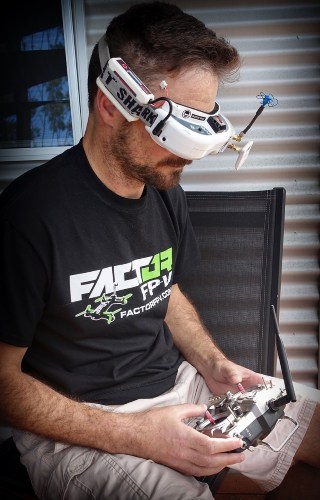
However, for in addition to the main camera, FPV pilots often use a secondary one on their beefiest builds specifically for recording their awesome flights in much higher quality than what would be the case with their FPV camera’s DVR footage. And, in these cases, some people like to use 2 axis gimbals simply to annihilate those tiny vibrations they might end up having due to not-that-perfect PID settings.
Back in the days, some people even used DIY gimbals for their FPV cameras and placed them on a 0-degree angle. This enabled them to get smoother transitions during their flights and allowed them to see more area ahead of them even when going full speed and throttle forward. Nowadays, the common practice in the hobby has changed drastically. The majority of people fly on 30+ degrees which pretty much annihilates the need for a gimbal stabilizer to sooth their viewing angle.
Wrapping things up…
We’ve already touched the majority of differences between these 2 types of gimbals as well as their respective pros and cons. For all of you currently in the shopping process, I truly believe this article will help shape your final decision.
To summarize – if you are a professional photographer or working in the movie industry, then 3 axis gimbals are an absolute must for you. On the other hand, if you are an FPV pilot or a casual user, you should be fine with no gimbal (this is especially true for FPV racers) or a 2 axis one.
That’s it, boys and girls… with those conclusive words, I am afraid we’ve come to the end of this article. Thank you all for reading and I hope to see you again…
All the best for your flights,
Vito Dronelli, Content Editor @DronesGlobe
The post What are the main differences between 2 axis and 3 axis gimbals ? appeared first on DronesGlobe.com.
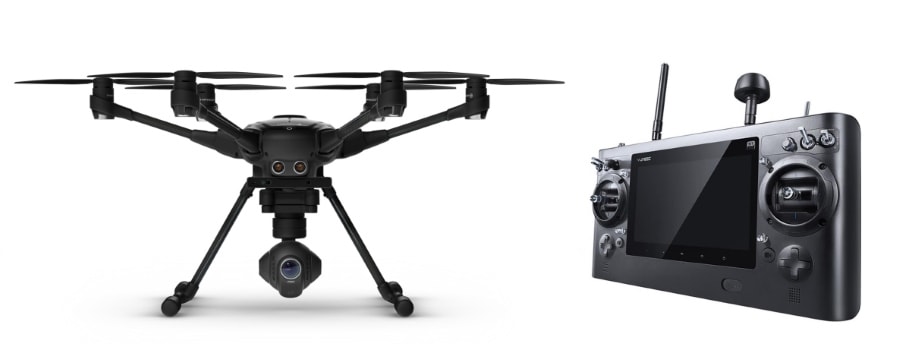
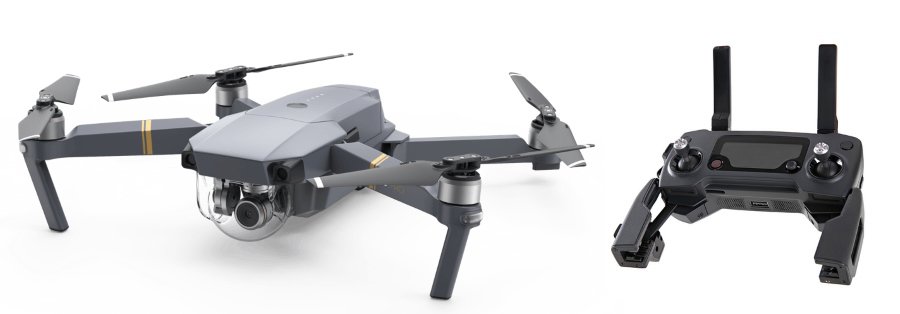


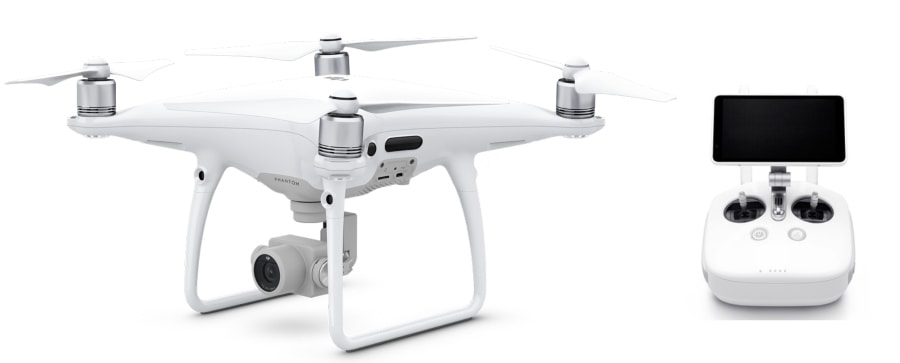



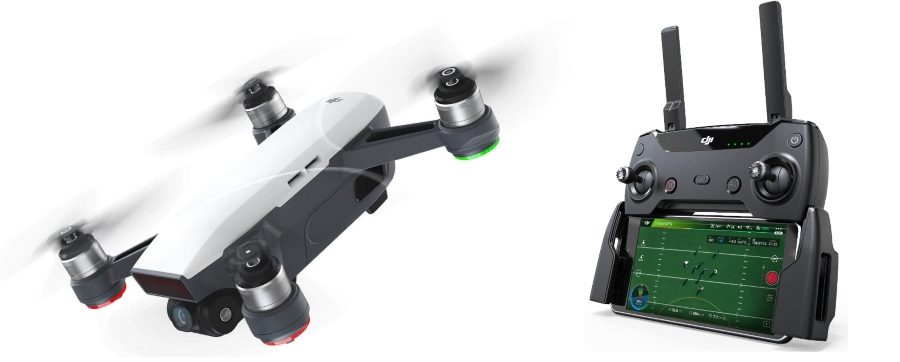


No comments:
Post a Comment